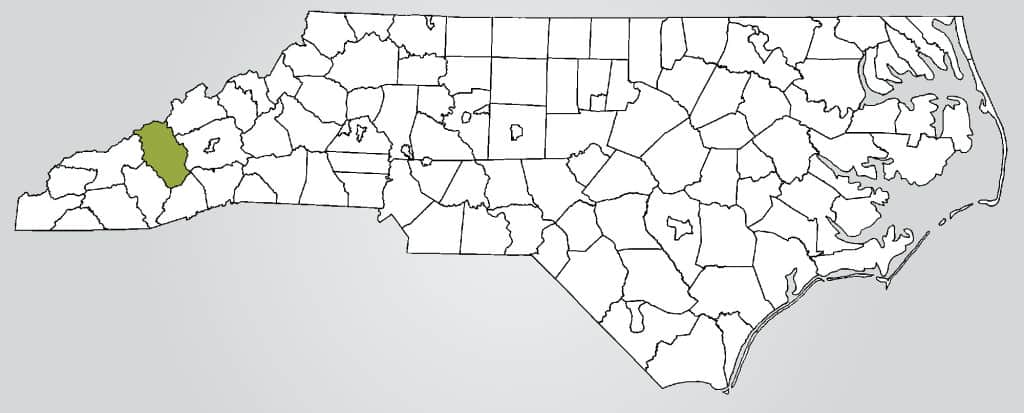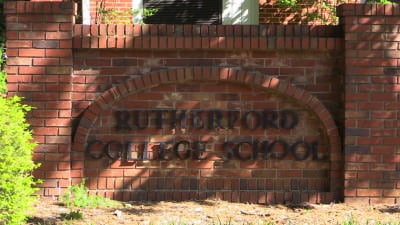You can’t miss Riverbend Elementary School. As you turn down the street leading to the school, you are met by a large field and a hill upon which “Riverbend” is spelled out using bushes.


The school is the pride of Haywood County and it should be. It was one of a very few schools with 50 percent or more free-and-reduced-price lunch students to receive an A in the recent round of A-F school grades.
“They profess to be teachers and they live that,” said principal Jill Chambers of her instructional staff. “They profess it as their life’s goal.”
Riverbend is a K-5 school with a current student population of 209. For the 2013-14 school year, the Department of Public Instruction’s NC School Report Cards website lists Riverbend as having 215 students, which is much smaller than the district average that year of 375, or the state average of 496.
Right now, Riverbend is teetering on the 50 percent mark for free-and-reduced-price lunch students, according to Chambers. Last year — the year for which it received an A — she said that percentage was a little over 50. DPI puts the percentage at 56.8.
The school is 97 percent white with only seven Hispanic students.
Chambers stressed to me the caliber of their education and the school’s high expectations for students as the primary reasons why the school was so successful. But she does acknowledge that the school’s size plays a factor.
“I think what’s understated here is the quality of our teachers,” she said “But I can’t deny that we do have a small community.”
Despite the small size of the school, Chambers says the student to teacher ratio in the classes is on par with other schools in the district and state. But teachers at the school say that its size allows them to connect with the students in ways staff at other schools might not be able to.
“One of the things that really astonished me is how everyone knew everyone else’s children,” said fourth-grade teacher Suzanne Bigsby. “I think the small size…helps that.”
But fifth-grade teacher Amanda Northrup said size isn’t everything.
“There are plenty of small schools that aren’t as successful as ours,” she said. “It’s not the magic bullet.”
She also stressed the high expectations teachers place on students and the notion that everybody can be successful. But she cautioned that “high expectations” don’t necessarily mean the same thing to everybody.
“When we say high expectations, I think there is a misconception in some other places that it means do harder work,” she said.
Rather, she said it means that students are expected to do the best they can in all things — whether that be schoolwork, how they behave in the hallway or talking to people with respect.
“Getting to those high expectations means we do whatever we can to make learning work for every individual kid,” she said.
The teachers also told me that they put in the extra effort to make sure their kids succeed – including spending one-on-one time after school helping the students without compensation.
Bill Nolte, associate superintendent for Curriculum and Instruction for the district, said the district has put a lot of time into figuring out how it can improve.
A little more than a decade ago, district staff began investigating higher-performing school districts to see why they were so good.
Nolte also cited the work of Jim Collins. Collins did research on businesses that went from good to great to figure out what accounted for their success. Nolte said Haywood County took a number of lessons from that research.
Some of those things include having a mission focused on passion, doing things efficiently and effectively, and taking care of the bottom line.
For businesses, the bottom line is money. For schools, it’s student achievement.
The district keeps detailed data on how students perform, and they use that to ascertain who the best teachers are and who needs help. That targeted data allows them to lend assistance to struggling teachers and utilize strong teachers for staff development.
The district went from 40th in the state about 10 years ago to 15th last year, Nolte said.
“When we add up every way that a student can be successful…there shouldn’t be any other districts that do better than us in all of those,” he said. “That really became our mission.”
And the district continues to look to other higher-performing districts for strategies on improving.
Riverbend is doing a lot to succeed. The district is clearly committed to improving the quality of Haywood County education, and Riverbend hires exemplary teachers – many of whom have been at the school for more than 10 years.
No school I’ve visited is successful for just one reason. They all exude excellence. But they all have a few things in common, including having a small population and being an intimate, community school. The Haywood County school system is the largest employer in the county, according to Chambers, and the size of Riverbend allows teachers to know their students in a way that might not be possible at a larger school.
Chambers says it’s the school’s ability to target students that helps it be effective.
And she says teachers are able to do that because they know the children. To that I would add, they are able to know the children because the school size is manageable.
As a student, I attended Jeffreys Grove Elementary School in Wake County. I knew no teachers but my own. And after I finished one grade, I never saw my teacher again. In 2013-14, Jeffreys Grove had 500 students, according to DPI’s NC School Report Cards website. I have no idea what that number was when I was there in the 1980s.
I did fine, but I sometimes wonder as I visit these A schools how I would have fared in a smaller community where — like Cheers — everybody knows your name.
The Map: School Report Cards
Monday: A-F Grades: Why early college high schools succeed
Tuesday: Ocracoke School: An education like no other
Wednesday: Rutherford College Elementary: Another community school
Wednesday: Riverbend Elementary School: Excellence and intimacy
Thursday: Henderson Collegiate: A school built on idealism
Friday: Why do some schools serving low-income populations get As?



